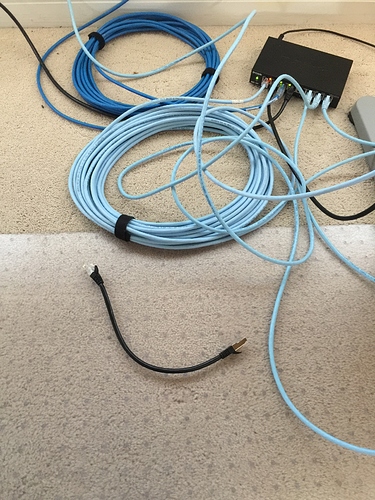For some it very well may be an RF issue where the cable is picking up noise or radiating it. If that’s culprit, then they should try to test for that and see if unplugging the cable changes the sound. For me it didn’t do anything. I tested it with the BDP-1 in the rack and 10+ feet away from the rack. Who knows, maybe in other’s case that noise is actually a problem. However, once you can eliminate that variable, and you still notice difference in sound, then you have to look elsewhere.
These Cat6 (especially the Belden bonded) cables are immune to 30 Mhz. On top of that, RF of that level is typically not a problem at homes. So how can cables still make a difference? Why does a linear power supply improve the sound? We know that they all get the bits across. No dropouts with any of them. I have a theory.
Remember signal integrity from way back? It might be that. We know there are no dropouts and bits are being turned into 0 and 1’s correctly. Has anyone looked at whether it’s easier or harder in some cases than others.
People try buying all kinds of cables with this shielding or that, fancy materials and this or that. Has anyone of them ever tried to control for length?
There might be something happening with the short cables in particular. I picked up a bunch more stuff from the data centre recently. All Fluke tested. I have multiple Cat6 UTP cables of varying length 1 feet, 2 feet, 3 feet, 1.25 m, 3 meters, 5 meters, 20+ meters.
They all work! Not one ever gives me a dropout. However, subjectively, it’s the short ones that sound different. As you start going long, differences quickly start going away.
I’ve read a few times on other network related forums (that have nothing to do with audio) and people troubleshooting for data centres that they generally recommend avoiding short lengths. Some insist that yes you can still make the short ones work, but the longer are better. I’ve read reflections as an issue.
If you have a switch, connect only the router to it along with the computer and network player to it. Put music on a USB drive and connect it to the computer so you can avoid a NAS and another cable. Use local playback and not from online source so the only cables involved in the path are the ones linking the computer and network player/DAC. I use a dummy router that’s not connected to net. So it’s there just to make things connect to each other. The port remains idle. If you want, you can even unplug it.
So for those two cables that are active, try varying the length. I know some people here won’t be able to vary the length of the cable from the computer to switch as the computer is in another room. In that case, you can try and change the length of the cable from the switch to the network player.
There are some other factors to mention as well which I’ll get to later. I have to leave soon.
